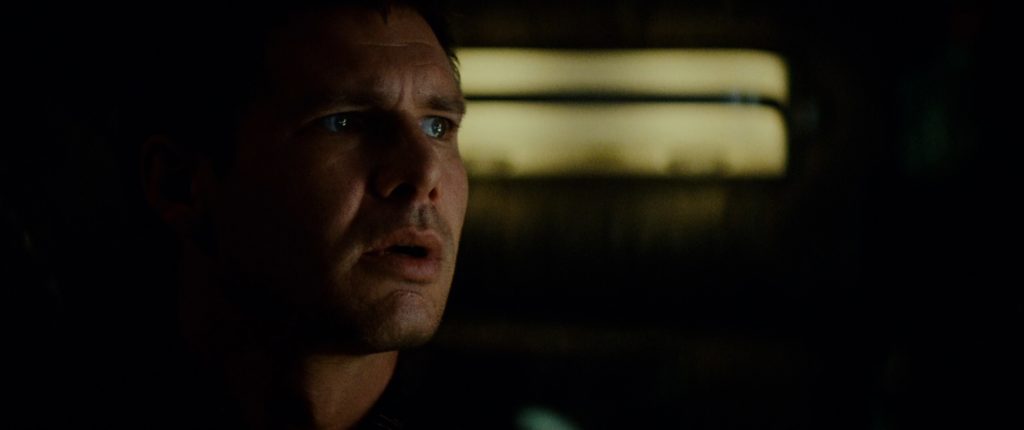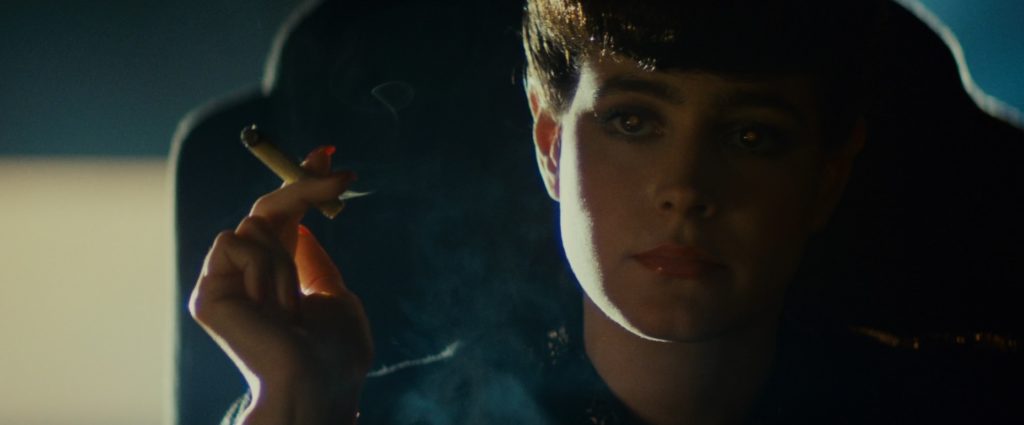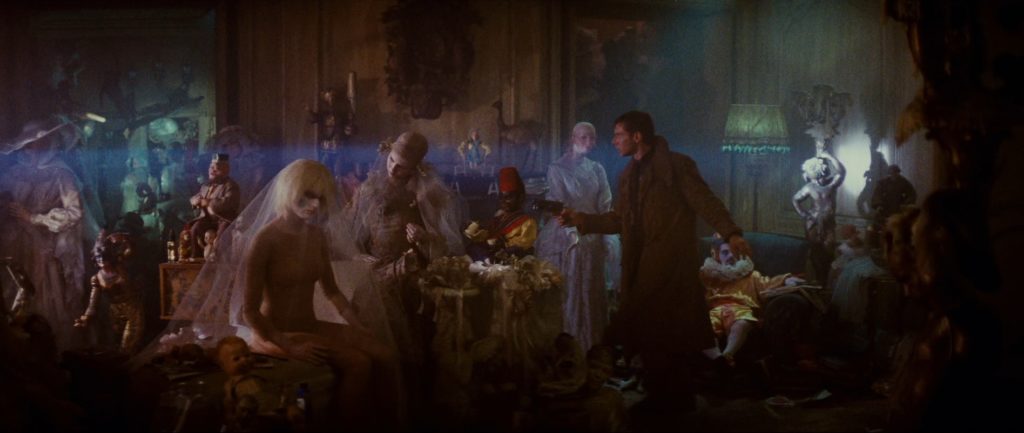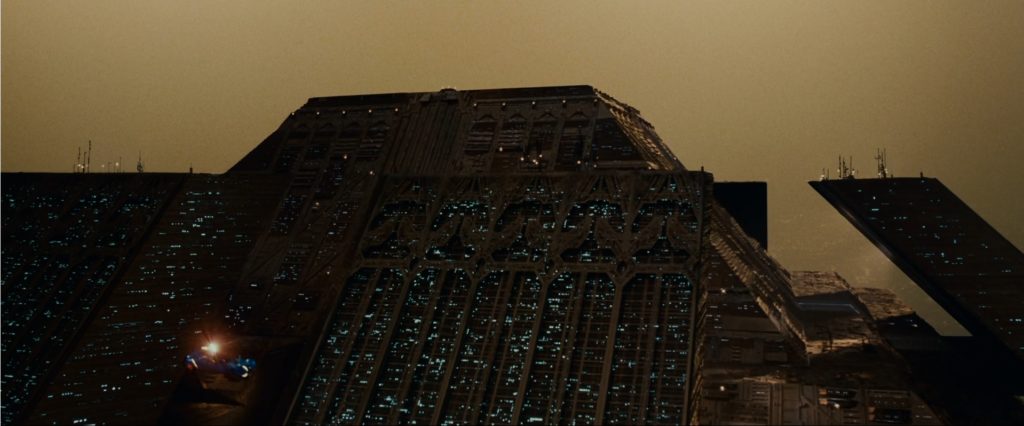
This is the first time I’ve mentioned Blade Runner on this blog which is not surprising as it is one of those films that has had so much written about it that it is hard to come up with anything original. This post will likely be no exception though after recently re-watching it, I was inspired to make an attempt.
Before getting into the meat of the post I do want to briefly dwell on something I’ve been contemplating with regard to films like this and other media in general. Since converting to Catholicism, I’ve progressively come to notice how much inappropriate content is present — particularly in films. Not so long ago, any sort of nudity, sexual intercourse, profanity, violence or strong horror was strictly banned. Today, it can almost feel odd to watch a film where none of this is present. I used to think little of this but more and more I’ve become careful with what I allow myself to watch.
Blade Runner features almost all of this and I found myself averting my eyes from the screen on a number of occasions but I don’t think this is good enough. I have decided that this will be the last time I watch this and even other films I used to really enjoy. I can well understand that this would appear peculiar to modern minds but I don’t think my thoughts depart much from what used to believed by the vast majority. I also don’t think I can use “engaging in the culture” or film analysis as an excuse. It wouldn’t work for pornography.
This by the way also includes literature. I read Haruki Murakami’s 1Q84 this year and multiple sections of that work were pornographic as were sections of Kafka on the Shore and A Wild Sheep Chase. These are the only novels of his I’ve read and Murakami is a genuinely great writer but I won’t be reading any more of his fiction unless sanitised versions are one day published.
With that out of the way, let’s get to the film.
My first viewing of Blade Runner was as part of a film study in Year 10, which it immediately occurs to me was not the most appropriate film for High School film study. Nonetheless, it was the first time I remember looking at a film critically covering aspects like camera angles, costume and set design. Blade Runner‘s mature themes aside, it is a model film for critical study. So the first time watching it was on VCR and with the teacher pausing to analyse and explain aspects of the film every few minutes. We did later get to watch it all the way through uninterrupted and were even shown the contrast between the director’s cut and theatrical version. The teacher I should add, remains one of the best I ever had and changed the way I looked at films from then on.

While I learned to appreciate the film in this study, I don’t remember much liking Blade Runner. That is, I liked parts of it but at the time, I mostly just thought it was boring and weird. I don’t remember the first time I re-watched it but it must have been ten or more years afterwards. By this time, I was more familiar with Ridley Scott and both Gladiator and Black Hawk Down released while I was in High School and remain favourites of mine to this day.
More recently I understand the film noir elements and have read Do Androids Dream of Electric Sheep? by Philip K. Dick. The latter is the main source material for the film and has a noticeably different tone though it has now been a few years since I read it — I was surprised that it did actually have an electric sheep too! As for the film noir elements, these are especially obvious in the original cut which has Rick Deckard (played by Harrison Ford) doing voiceover narration at a number of points in the film. This was a staple of film noir and even present in parodies of the sub-genre. As well as this, Deckard is a heavy-drinking detective and the lighting and soundtrack adds to this mood despite it still being firmly in the science-fiction genre. This was also around the time that the cyberpunk came into being and Blade Runner was an early film is this sub-genre though I’m not sure if this was consciously done. It is this unlikely yet successful mix of genres that has helped the film’s legacy.

The film is also visually fascinating and continues to impress me to this day. This goes well beyond the wonderful opening scenes too. The world created looks very real and there are so many little details that make this work. The polluted skylines, the dark and dingy streets and the dilapidated dwellings all look like real (if unpleasant) places that people really live. The frequent rainfall also adds to this particularly in the leaky building where J.F. Sebastian (William Sanderson) lives with his little creations. I have noticed more and more little details every time I’ve watched it; most recently in Deckard’s apartment. A lot of films set in the future portray a world with a sterile minimalist appearance that comes off as unreal. That Blade Runner includes sweaty humans, trash and grimy food stalls is simple but brings the world alive better than any visual trickery ever could.
The time the film was set actually passed three years ago as of writing but this hasn’t affected the appeal. Los Angeles is in some ways starting to resemble areas of the vision of the city in the film though without much of the advanced technology. Though we don’t have flying cars or cybernetics anywhere approaching the replicants, some of the technology shown does now exist. One anachronism that stands out are the computer displays which do look dated as they also do in the original Star Wars. I found myself considering ways this could be explained away and came up with limited (or expensive) energy necessitating simply computer interfaces. Another explanation could be because computers in the real world are becoming increasingly convoluted and it wouldn’t be surprising to see a reaction against this in favour of simple technology that works as it is supposed to.

I would be remiss if I didn’t also mention the actors who also did much to make the film memorable. Rutger Hauer, Daryl Hannah, Sean Young and Edward James Olmos were all stand-outs as were the two others already mentioned above. The cast is both colourful and relatable and thus personify the overriding theme of what it means to be human. Something I focused on this viewing was how uncomfortable Ford looked with each replicant he killed and how desperately they all clung to life. I have long considered the final act of the film to be the weakest and got more enjoyment out of the detective story of the first two acts but the death of Roy Batty is still a powerful and moving scene.
I can’t avoid also mentioning the “Deckard being a Replicant” debate which was made official in the pointless sequel released a few years ago. The sequel would have worked much better as an unrelated film and the elements from Blade Runner added nothing to what could have been a more interesting film on its own. My teacher brought up the “Deckard replicant” debate when I first saw it in school but I can’t remember what their opinion was. My own view is that it is silly and at best adds nothing to the film. More seriously, Deckard’s increasing distaste for what he has set out to do is completely undermined by his being a replicant himself.

I wouldn’t say I love Blade Runner and it certainly isn’t one of my favourite films but it is a very interesting film nonetheless. I do like it and continue to appreciate the appeal and continued influence it has had. I definitely appreciate it a lot more than I did as a teenager with a much shorter attention span. Since I’ll likely not mention this separately, the 1997 Westwood Studio’s Blade Runner game is also recommended. It captures much of the appeal of the film most particularly with the characters, locations and it nails the tone too.
